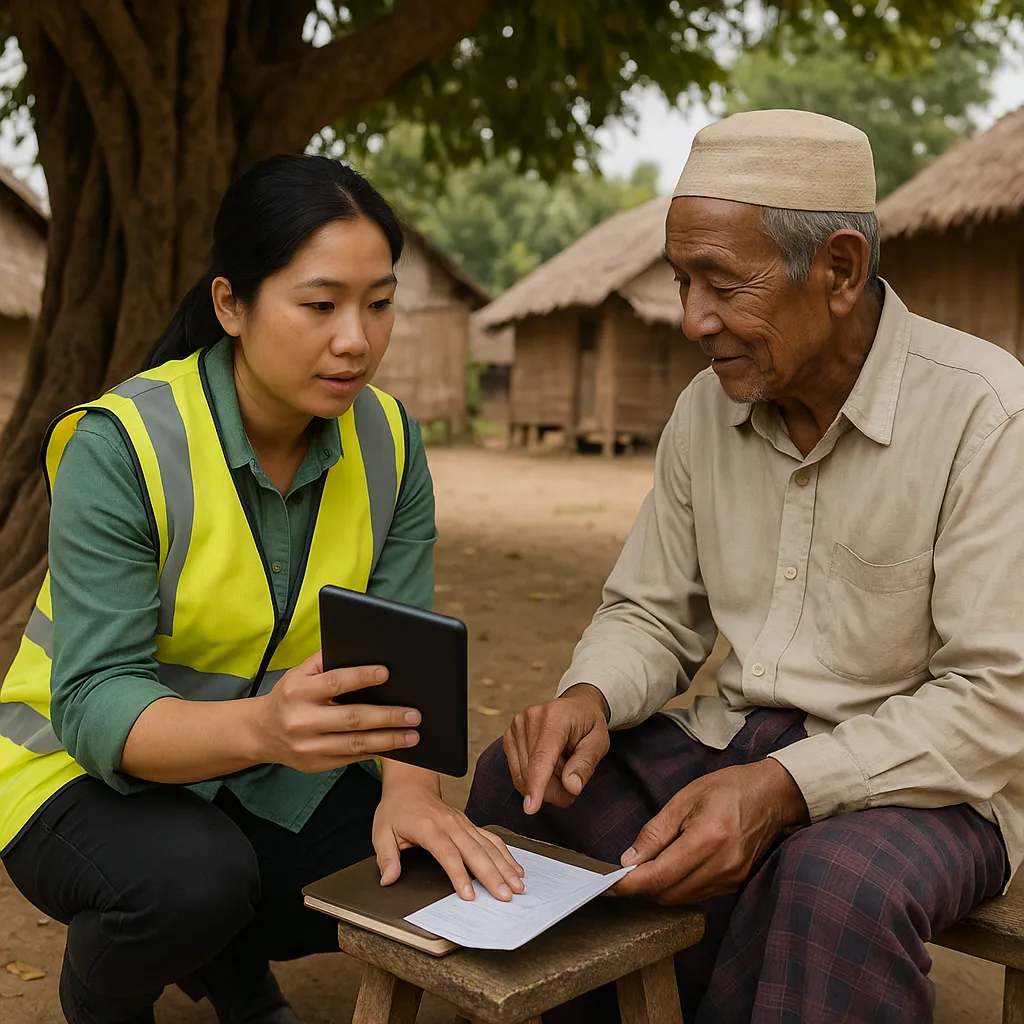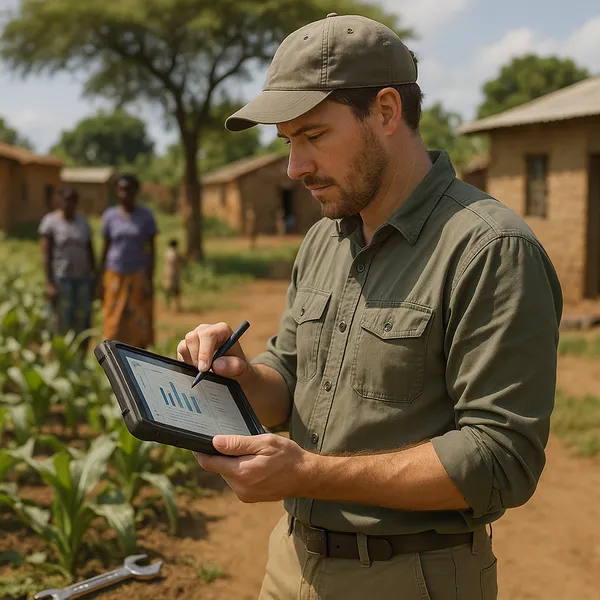Data Governance and Compliance in Challenging Environments
Published on: Tue Jan 30 2024 by Ivar Strand
Global Standards, Local Realities: A Framework for Data Governance and Compliance
Introduction
The global landscape of data governance has been fundamentally reshaped by regulations such as the European Union’s General Data Protection Regulation (GDPR) and the World Bank Group’s Data Privacy Addendum (DPA). These frameworks have established a high global standard for protecting the rights and freedoms of individuals concerning their personal data. Their core principles—lawfulness, purpose limitation, data minimisation, and security—are now the benchmark against which responsible data handling is measured.
While these principles are universal, their application presents immense operational challenges for organisations working in fragile and conflict-affected states. The central problem is how to translate high-level legal requirements, often designed for a high-tech and formally regulated world, into practical, workable protocols for field operations. This is especially complex in environments with limited digital infrastructure, unique security risks, and profound ethical considerations related to the protection of vulnerable populations. This paper outlines a practical framework for achieving rigorous compliance that is also contextually appropriate.
Core Principles and Their Operational Hurdles
A pragmatic approach to compliance begins by acknowledging the specific hurdles that emerge when applying global standards in local field realities. Each core data protection principle carries a corresponding operational challenge that must be deliberately addressed.
- Lawfulness, Fairness, and Transparency: The legal principle requires that all data processing be lawful and that consent be informed, specific, and freely given. The operational hurdle is the very definition of “informed consent” in a community with low literacy rates or significant power imbalances. A signature on a form is not sufficient if the individual does not truly comprehend what they are consenting to, or if they feel pressured to agree by community leaders or project staff. The challenge is to make the consent process genuinely transparent and voluntary.
- Purpose Limitation and Data Minimisation: These twin principles mandate that data be collected only for specified, explicit purposes, and that the data collected be limited to what is strictly necessary. The operational hurdle is the pervasive tendency to collect extraneous data—information that is “nice to have” but not essential for the project’s objectives. This creates unnecessary risk. The challenge is to instill the discipline to scrutinize every question on a survey and justify its inclusion based on a direct link to a pre-defined analytical need.
- Storage Limitation and Security: The regulations require that personally identifiable information (PII) not be kept longer than necessary and that it must be protected against unauthorized access, loss, or theft. The operational hurdles here are numerous and acute. How does one ensure the security of data stored on a field enumerator’s mobile device in a region with high crime rates? What are the protocols for securely transferring data from an area with sporadic, low-bandwidth internet connectivity? How is a data deletion policy enforced across dozens of devices, cloud backups, and local servers?
A Framework for Context-Aware Data Governance
Addressing these hurdles requires moving beyond a simple compliance checklist. It demands a systematic framework that embeds data protection into the operational DNA of a project. This framework is a continuous cycle, not a one-time activity.
- Conduct a Contextualized Data Protection Impact Assessment (DPIA). Before any data collection begins, a DPIA adapted for the field context is essential. This is a systematic process to map the entire data lifecycle. It forces the project team to answer critical questions: What specific PII will be collected? For what precise purpose? Where will it be stored, and in what format? Who will have access to it? Most importantly, what are the potential risks to the data subjects if this information is breached, and how will those risks be mitigated? This process must consider not just digital risks, but potential social or physical harm.
- Design for Privacy by Default and by Design. This principle means that data protection is not an add-on but a core feature of the system’s architecture.
- Anonymisation and Pseudonymisation: The default protocol should be to separate PII from the main analytical dataset at the earliest possible stage. Use unique, randomly generated IDs to link records, and store the key linking PII to these IDs in a separate, highly encrypted, and access-restricted location.
- Role-Based Access Controls: Implement strict access controls within the project team. A data analyst may need to see survey responses, but they may not need to see the names or contact information of the respondents. Access to raw, identifiable data should be limited to a very small number of authorized individuals.
- Develop Robust and Ethical Consent Protocols. Consent must be treated as a process of communication, not a bureaucratic step.
- Layered and Simplified Language: Develop consent scripts in local languages that avoid legal jargon. Explain clearly what data is being collected, why, how it will be used, who will see it, and what the risks are. A layered approach, providing a simple summary upfront with more detail available, can be effective.
- Verbal and Witnessed Consent: In contexts with low literacy, recorded verbal consent is often more meaningful than a signature. The process should ideally be observed by an independent witness (such as a community elder who is not a direct beneficiary) to ensure there is no coercion.
- Implement a Secure Chain of Custody for Data. Clear, non-negotiable protocols must govern how data is handled from collection to deletion. At Abyrint, we have found that implementing a strict chain of custody is critical. This includes mandatory device encryption and strong passwords for all data collection tools; a ban on using insecure transfer methods like personal email or unencrypted USB drives; and a clear data retention policy that specifies when and how different types of data will be securely destroyed after the project concludes.
Governance as an Ethical Imperative
Ultimately, achieving compliance with regulations like GDPR in fragile environments is not about satisfying European regulators. It is a fundamental component of our professional and ethical responsibility to “Do No Harm.” In a developed country, a data breach may lead to financial loss or identity theft. In a conflict-affected region, the consequences of a breach can be far more severe—the exposure of a person’s ethnicity, political affiliation, or status as a survivor of violence can lead to social ostracism, loss of aid, or direct physical harm.
Therefore, building a robust, context-aware data governance framework is not merely a legal or technical exercise. It is a direct expression of an organization’s commitment to protecting the dignity, safety, and fundamental rights of the communities it exists to serve.



